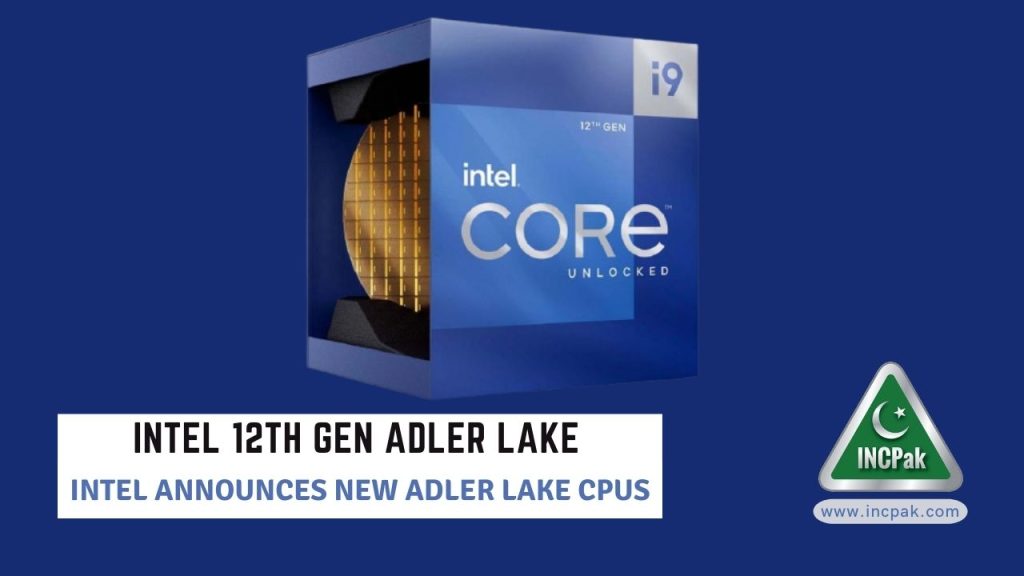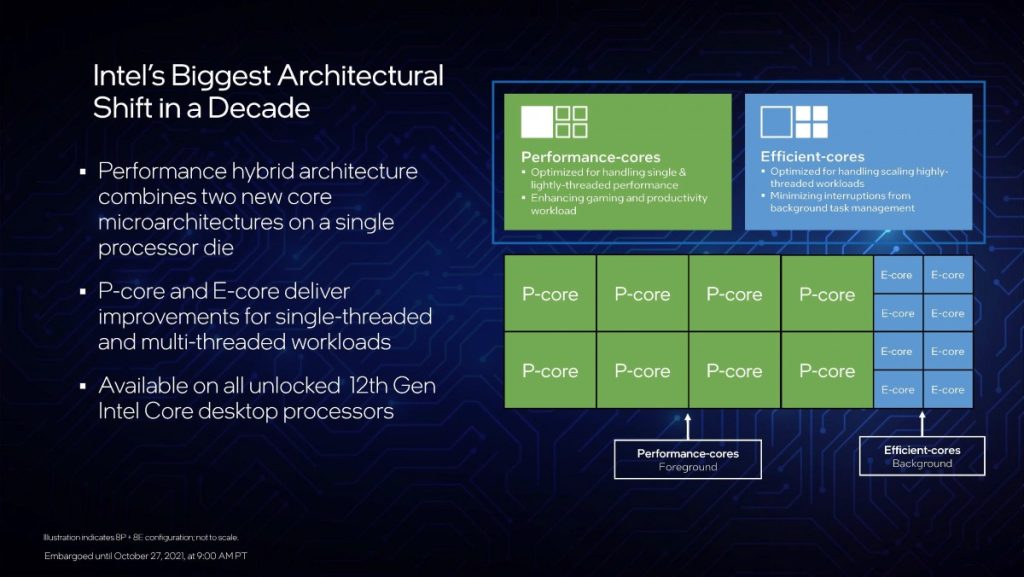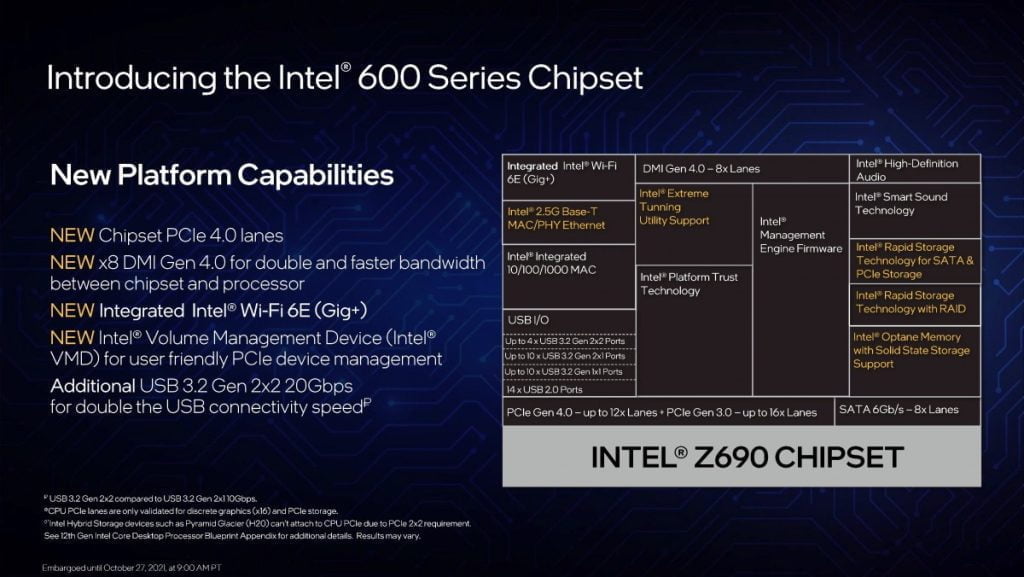Intel has announced its 12th Generation of the Intel Core Processors (codenamed Adler Lake). The company has introduced six new Intel 12th Gen Processors, including the Core i9 12900K, Core i7 12700K, and the Core i5 12600K, with the remaining three processors being the KF variant of the aforementioned models.

The main feature of the new CPU’s isn’t the new architecture but the switch to a Hybrid Core Design. Intel 12th Gen Processors use a combination of Performance Cores (P-Cores) and Efficient Cores (E-Cores) instead of using all multiple cores at the same time.
This new feature is somewhat identical to Apple’s M-Series Desktop Processors, where the performance cores do most of the heavy lifting and the efficient cores take care of the low-level tasks, including music playback, which consumes a lot less power than the performance cores.
Furthermore, the CPU design of the Intel 12th Generation Processors allow only the performance cores to support hyper-threading, which means that on the Core i9-12900K, there will only be 8 P-Cores and 8 E-Cores for a total of 24 threads. Likewise, the Core i5-12600K has 6 P-Cores and 4 E-Cores for a total of 16 threads.

The split core design in the new processors also means different clock speeds for for the P-Cores and the E-Cores. The Core i9 12900K has a base clock of 3.2Ghz with a boost clock of up to 5.1Ghz and a max clock of up to 5.2Ghz for the P-Cores. Meanwhile, the E-Cores have a base clock of 2.4Ghz and a boost clock of 3.9Ghz.
Intel is switching to a newer chipset as well with the 12th Gen Adler Lake Core Processors – the Z690, which uses a new LGA1700 socket, which isn’t surprising since Intel has stuck to the same chipset with the previous two generation of CPUs. It is expected that other chipsets will be introduced in the future, such as the B660 or H610 options.
The new Intel 12th Generation Core Processors are also the first chips to support DDR5 memory with native support for DDR5 4800 MT/s and higher speeds with XMP 3.0 profiles. The new processors also support DDR4 but motherboards will only have support for either DDR4 or DDR5.

Moreover, the new chips have also seen a bump in cache size, with the i9 models getting 30MB L3 cache, the i7 getting 25MB L3 cache, and the i5 getting 20MB L3 cache. Intel 12th Gen Processors are also the first to support PCIe 5.0. You will get 20 PCIe lanes in total from the CPU, of which 16 are PCIe 5.0 and the remaining four are PCIe 4.0.
These chips will also be equipped with Intel UHD Graphics 770. However, the F variants will not have any integrated graphics like the previous generations.
Intel is also moving away from its previous TDP rating method and it will now provide direct power ratings for base power as well as maximum turbo power, so users have better understanding of thermal characteristics of their chips before choosing the cooling solution which is right for them.
The Core i9-12900K, for example, has a power rating of 125W for base power consumption at base clocks and 241W at maximum turbo clocks. The i5-12600K is 125W and 150W, respectively.
The 12th Gen Intel Core processors start at $264 for the Core i5-12600KF and go all the way up to $589 for the Core i9-12900K. The processors are available for pre-order alongside the Z690 motherboards and they will be available starting November 4.
Read more: You Can Now Transfer WhatsApp Chat History From iPhone to Android on Any Smartphone.









